New discovery in marine biology: deep-sea species slender ribbonfish appeared near the shoreline of Taijiang National Park to lay eggs
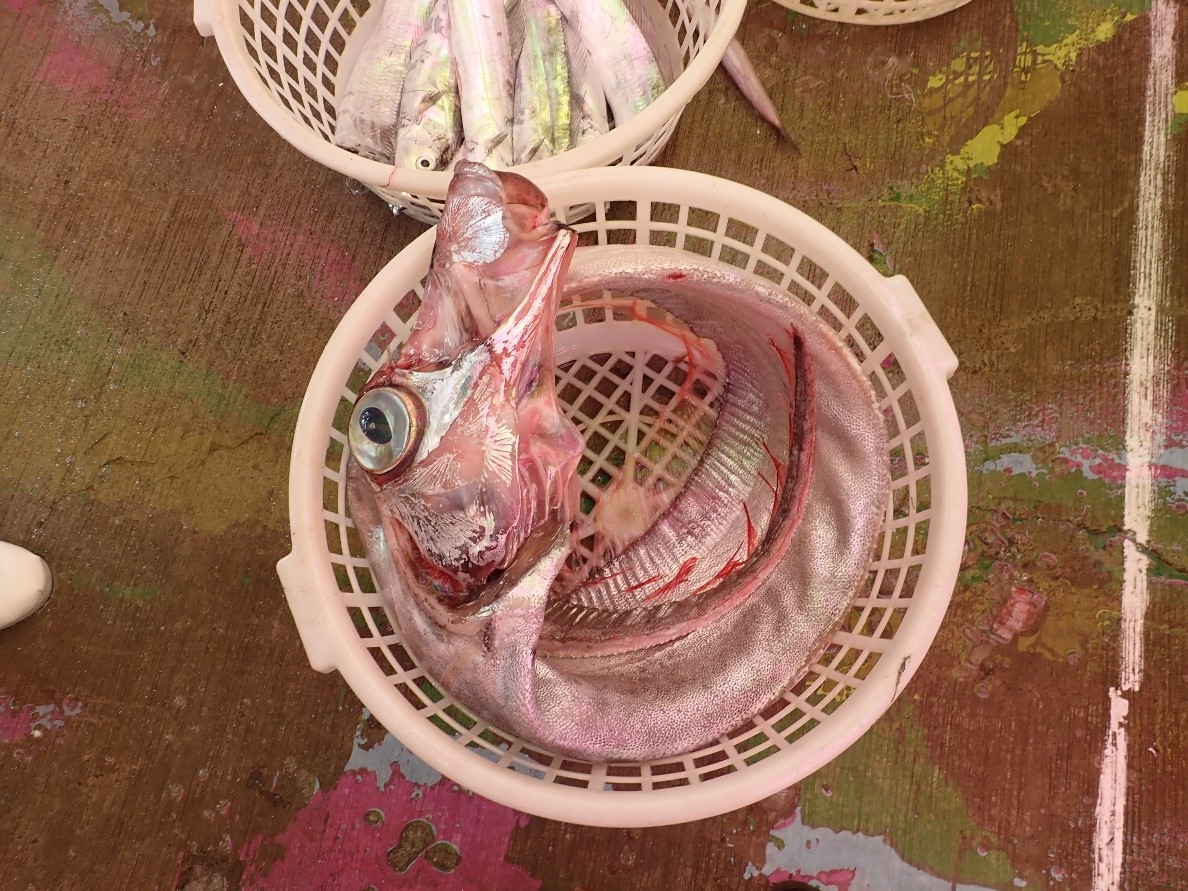

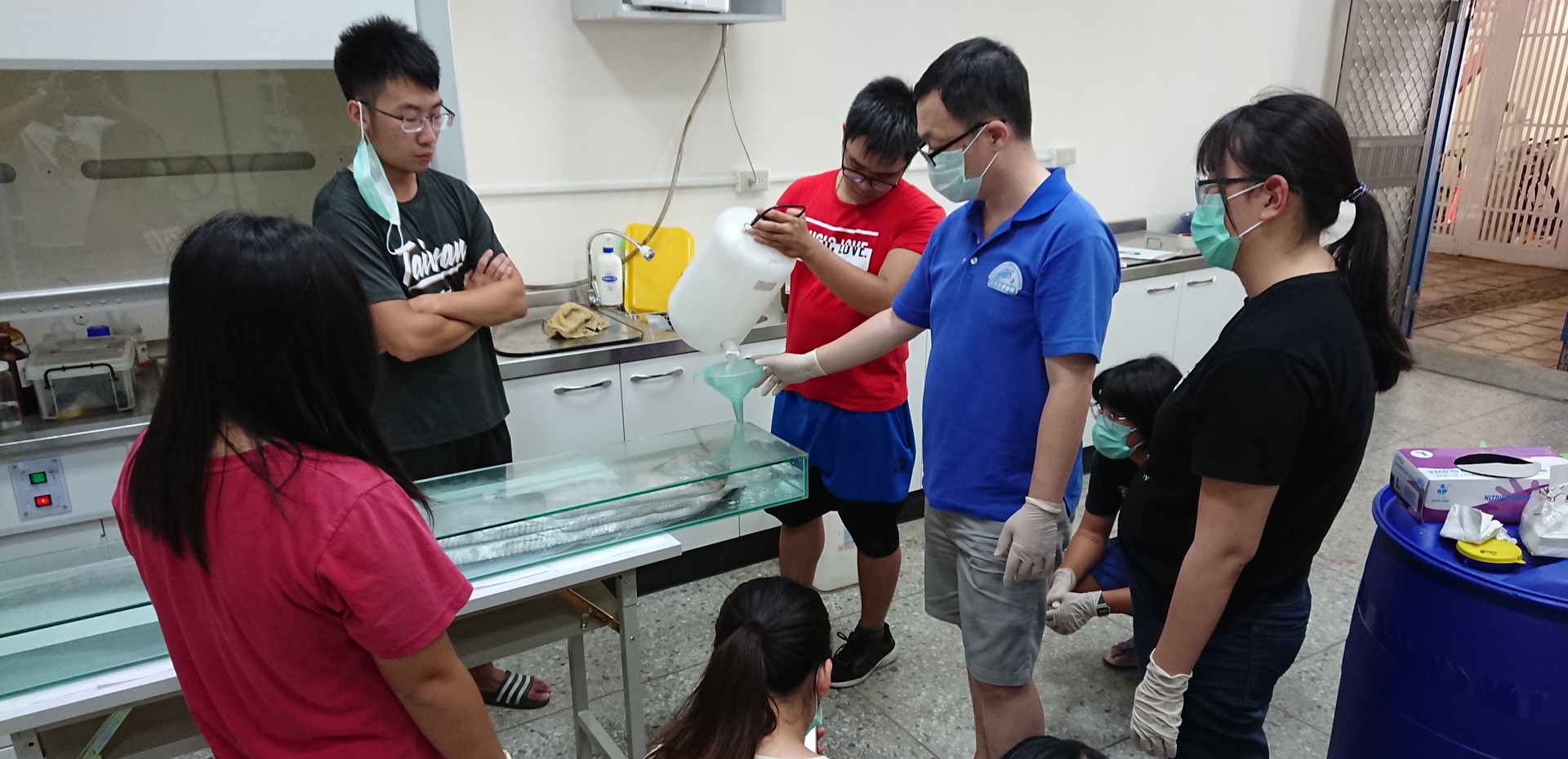
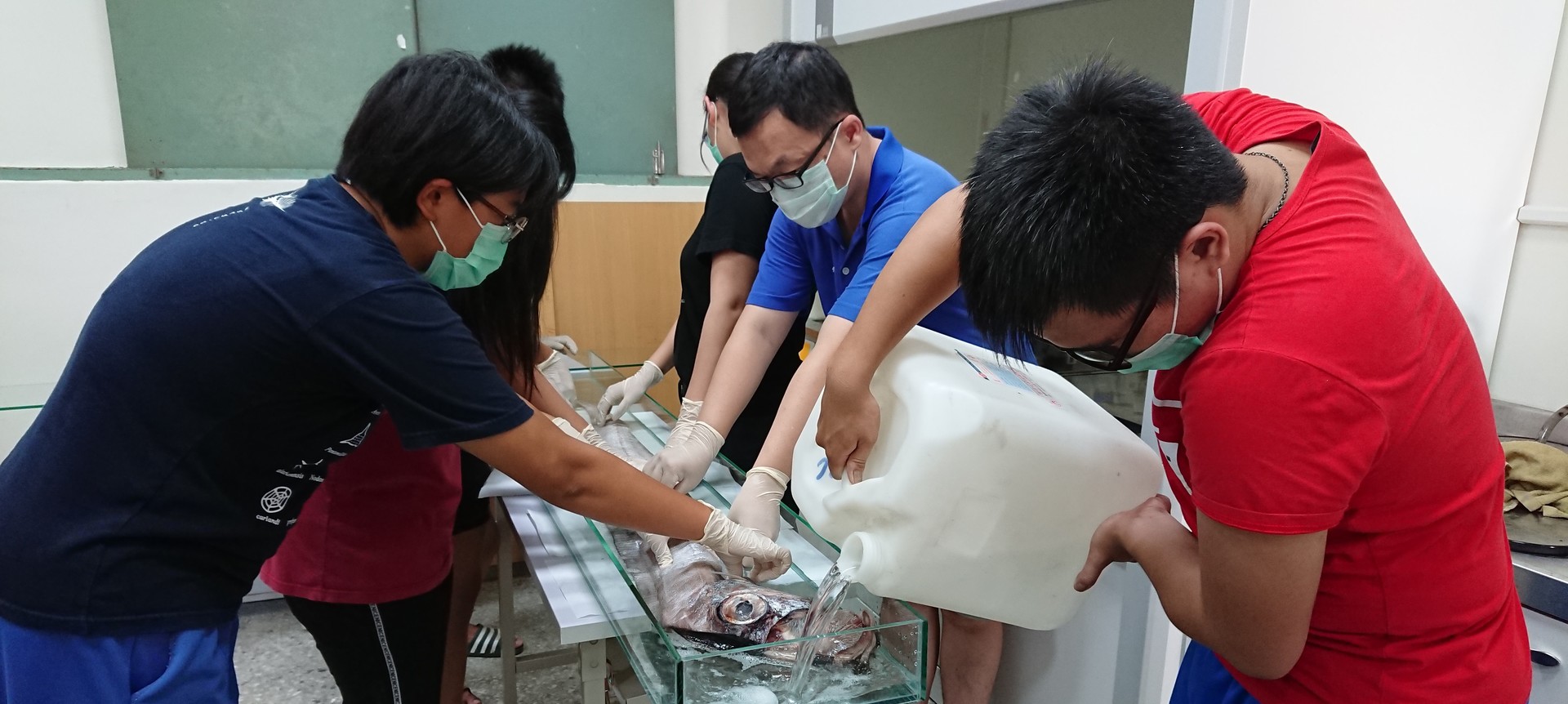
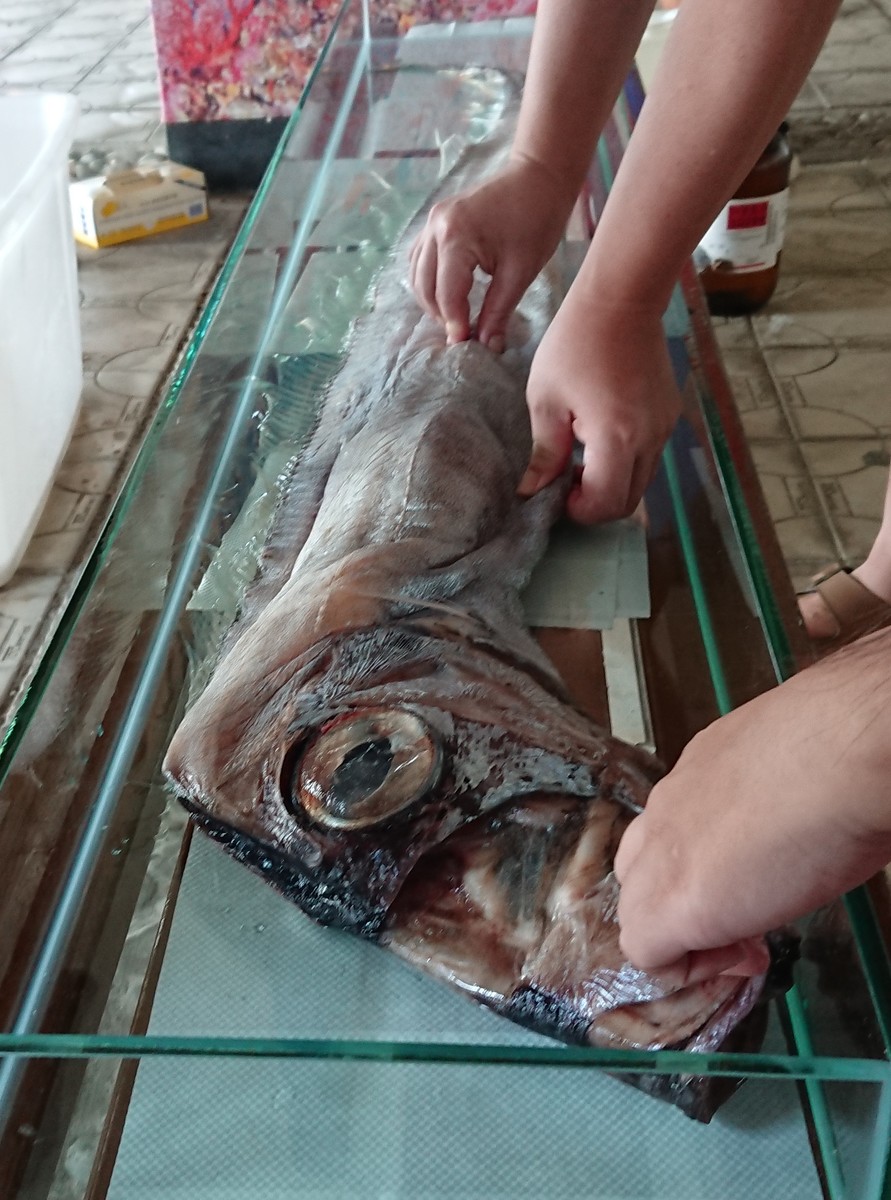
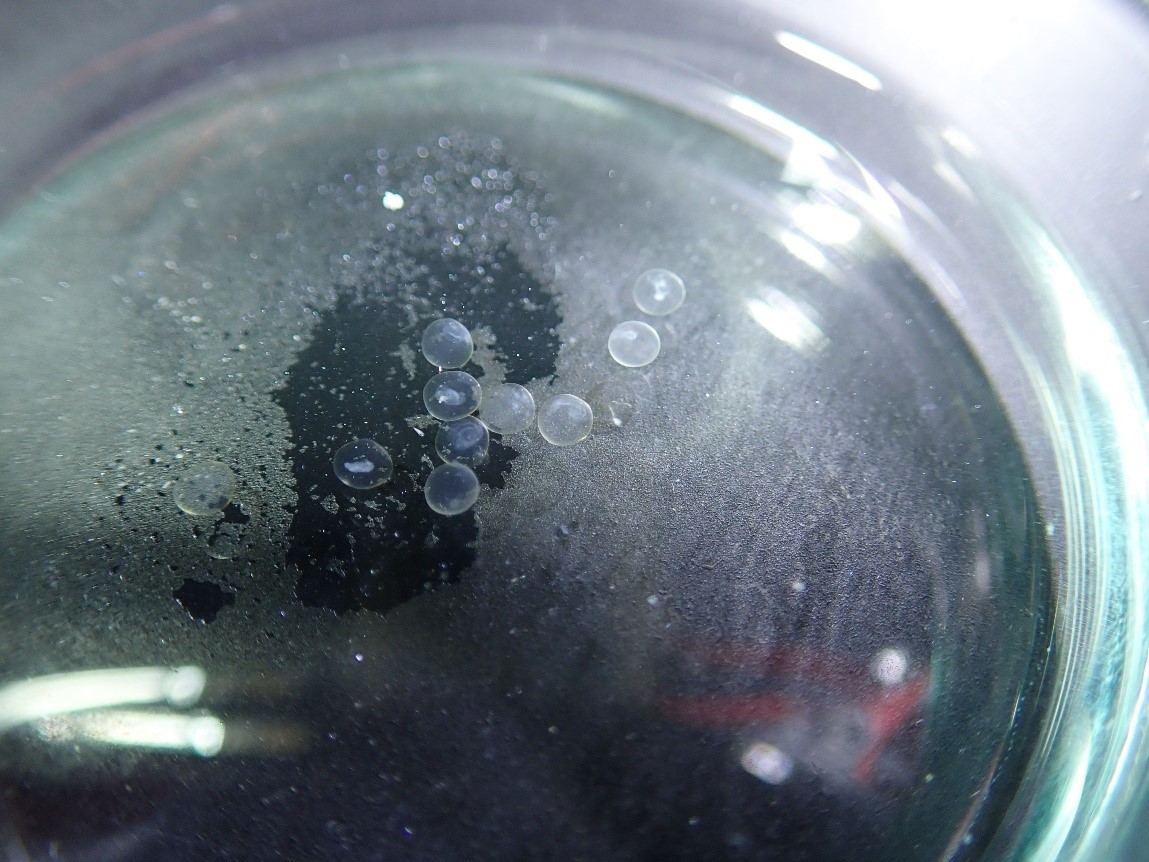
(Report by student journalist) The research team of Professor Meng-Hsien Chen of the Department of Oceanography at National Sun Yat-sen University examined the 185cm long specimen of deep-sea slender ribbonfish (Trachipterus ishikawae, Jordan & Snyder, 1901), a bycatch purchased on November 11th, 2018, from a fisherman who caught it off the Chiku Lagoon in the Taijiang National Park. Conducting dissection, the team found mature eggs in the body of the animal and it is presumed that the fish was about to lay eggs in the nutritious waters off the Taijiang coast flowing from the deep Pescadores Channel. This is an important discovery for the research on the life history of the slender ribbonfish.
The research team of Professor Chen was entrusted by Taijiang National Park in 2016 with conducting a study of the marine ecosystem of the Park. Professor Chen said that, in general, the habitat of the slender ribbonfish is waters as deep as 1200m, and the fish can occasionally appear near the shore. The research team discovered mature eggs inside the body of this female slender ribbonfish, caught in the shallow waters close to the shoreline of the Taijiang coast. It can be presumed that the fish came to the shore to lay eggs in the nutritious waters of the Park which are brought in by the Kuroshio Current from the Pescadores Channel. She emphasized that because it is not easy to observe the habits of deep-sea species of fish, this is an important discovery for the ecological study of the slender ribbonfish.
After the dissection, Associate Professor Te-Yu Liao of the Department of Oceanography and fourth-year students of the Department jointly produced a specimen of the fish and displayed it in a thematic marine exhibition organized at the College of Marine Sciences, NSYSU. Associate Professor Liao said that it was the first time for him to deal with such a big specimen of fish and that it was a new and exciting experience for him and the students. The nearly 2m long slender ribbonfish was much larger than any specimen the members of the team had previously processed. The production of the specimen required a custom-size glass tank for preservation. Student of the Department of Oceanography, Wei-Cheng Hsiung, said that although the whole process of producing a specimen of such a long fish was very complicated to carry out as a team, it was a new experience which let them learn about the organism of slender ribbonfish and acquire new knowledge in marine biology.
The exhibited specimen of slender ribbonfish received a great deal of feedback from visitors who were deeply impressed by the peculiar appearance of the deep-sea fish. Thus, Professor Meng-Hsien Chen and Associate Professor Te-Yu Liao decided to donate the specimen to Taijiang National Park Visitor Center to be displayed in the permanent exhibition. It is a great example of industry-academia cooperation. Professor Chen said that it is a significant discovery for marine research and she hopes that exhibiting this specimen will help promote knowledge of marine science and awareness of the importance of marine conservation of the Taijiang National Park.
(Edited by Public Affairs Division)
The research team of Professor Chen was entrusted by Taijiang National Park in 2016 with conducting a study of the marine ecosystem of the Park. Professor Chen said that, in general, the habitat of the slender ribbonfish is waters as deep as 1200m, and the fish can occasionally appear near the shore. The research team discovered mature eggs inside the body of this female slender ribbonfish, caught in the shallow waters close to the shoreline of the Taijiang coast. It can be presumed that the fish came to the shore to lay eggs in the nutritious waters of the Park which are brought in by the Kuroshio Current from the Pescadores Channel. She emphasized that because it is not easy to observe the habits of deep-sea species of fish, this is an important discovery for the ecological study of the slender ribbonfish.
After the dissection, Associate Professor Te-Yu Liao of the Department of Oceanography and fourth-year students of the Department jointly produced a specimen of the fish and displayed it in a thematic marine exhibition organized at the College of Marine Sciences, NSYSU. Associate Professor Liao said that it was the first time for him to deal with such a big specimen of fish and that it was a new and exciting experience for him and the students. The nearly 2m long slender ribbonfish was much larger than any specimen the members of the team had previously processed. The production of the specimen required a custom-size glass tank for preservation. Student of the Department of Oceanography, Wei-Cheng Hsiung, said that although the whole process of producing a specimen of such a long fish was very complicated to carry out as a team, it was a new experience which let them learn about the organism of slender ribbonfish and acquire new knowledge in marine biology.
The exhibited specimen of slender ribbonfish received a great deal of feedback from visitors who were deeply impressed by the peculiar appearance of the deep-sea fish. Thus, Professor Meng-Hsien Chen and Associate Professor Te-Yu Liao decided to donate the specimen to Taijiang National Park Visitor Center to be displayed in the permanent exhibition. It is a great example of industry-academia cooperation. Professor Chen said that it is a significant discovery for marine research and she hopes that exhibiting this specimen will help promote knowledge of marine science and awareness of the importance of marine conservation of the Taijiang National Park.
(Edited by Public Affairs Division)
Click Num:
Share
